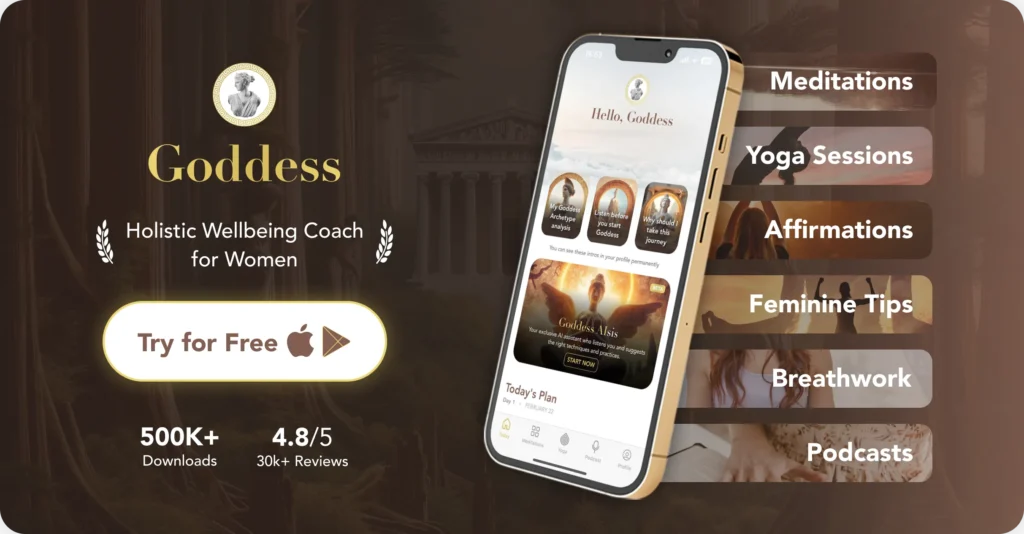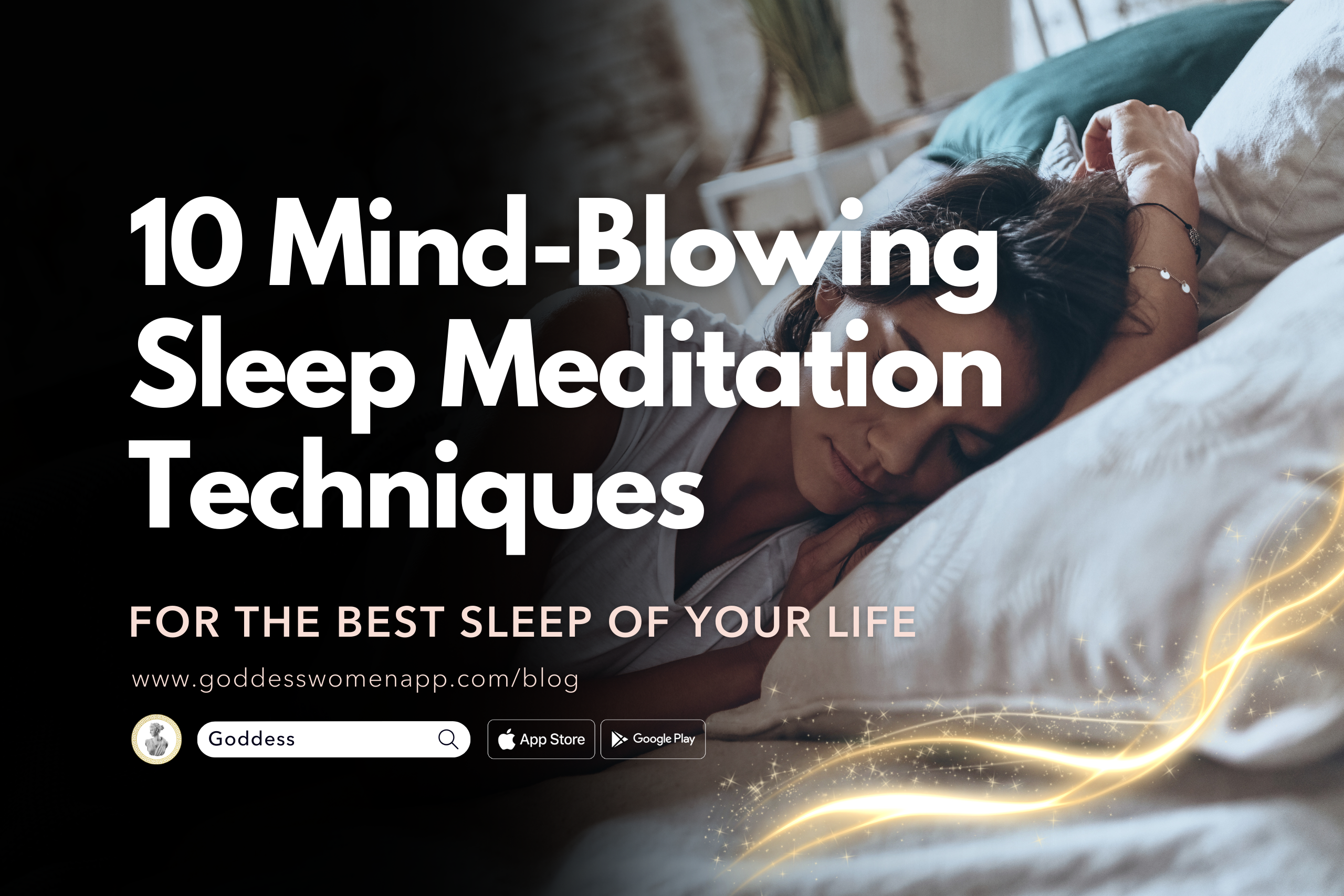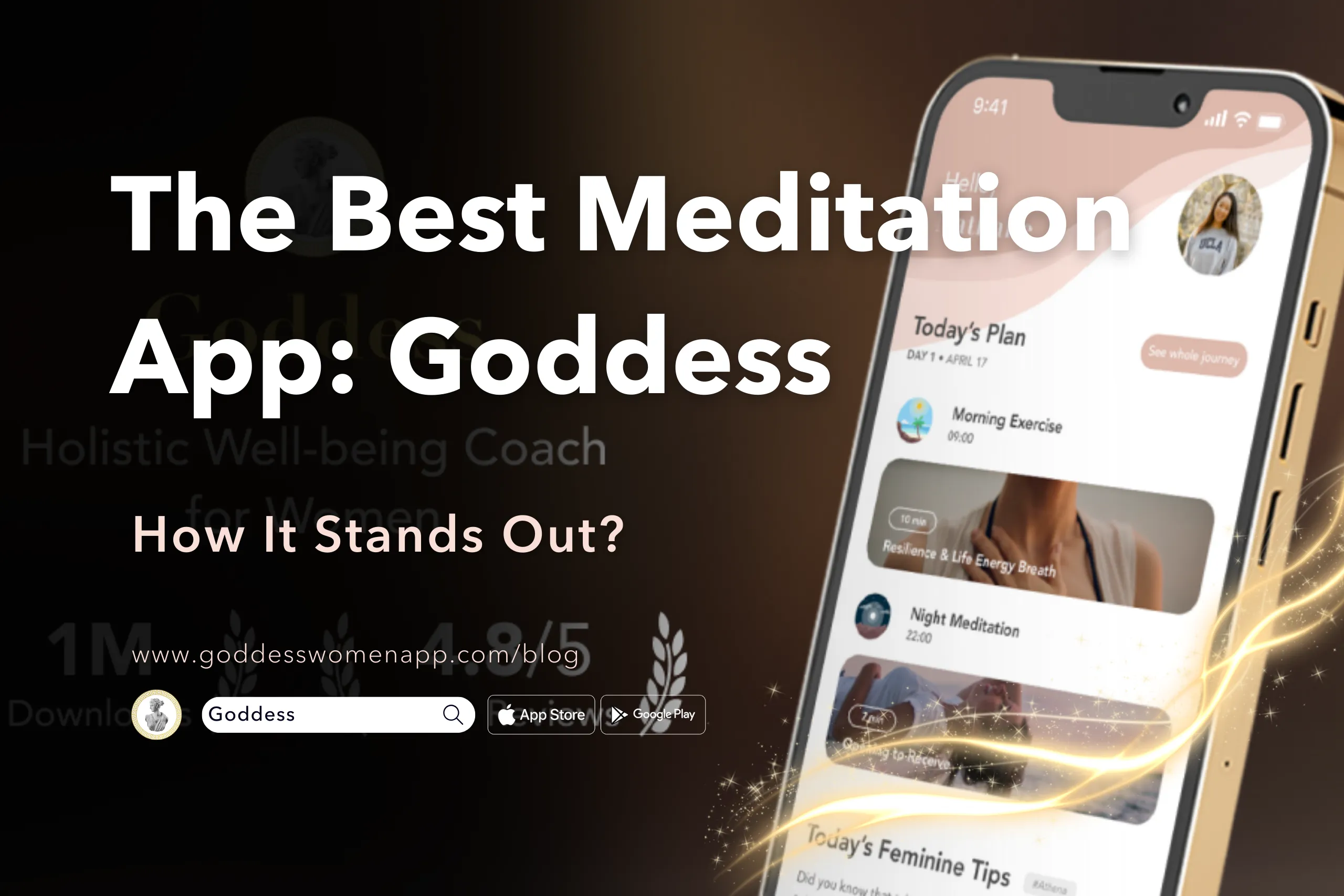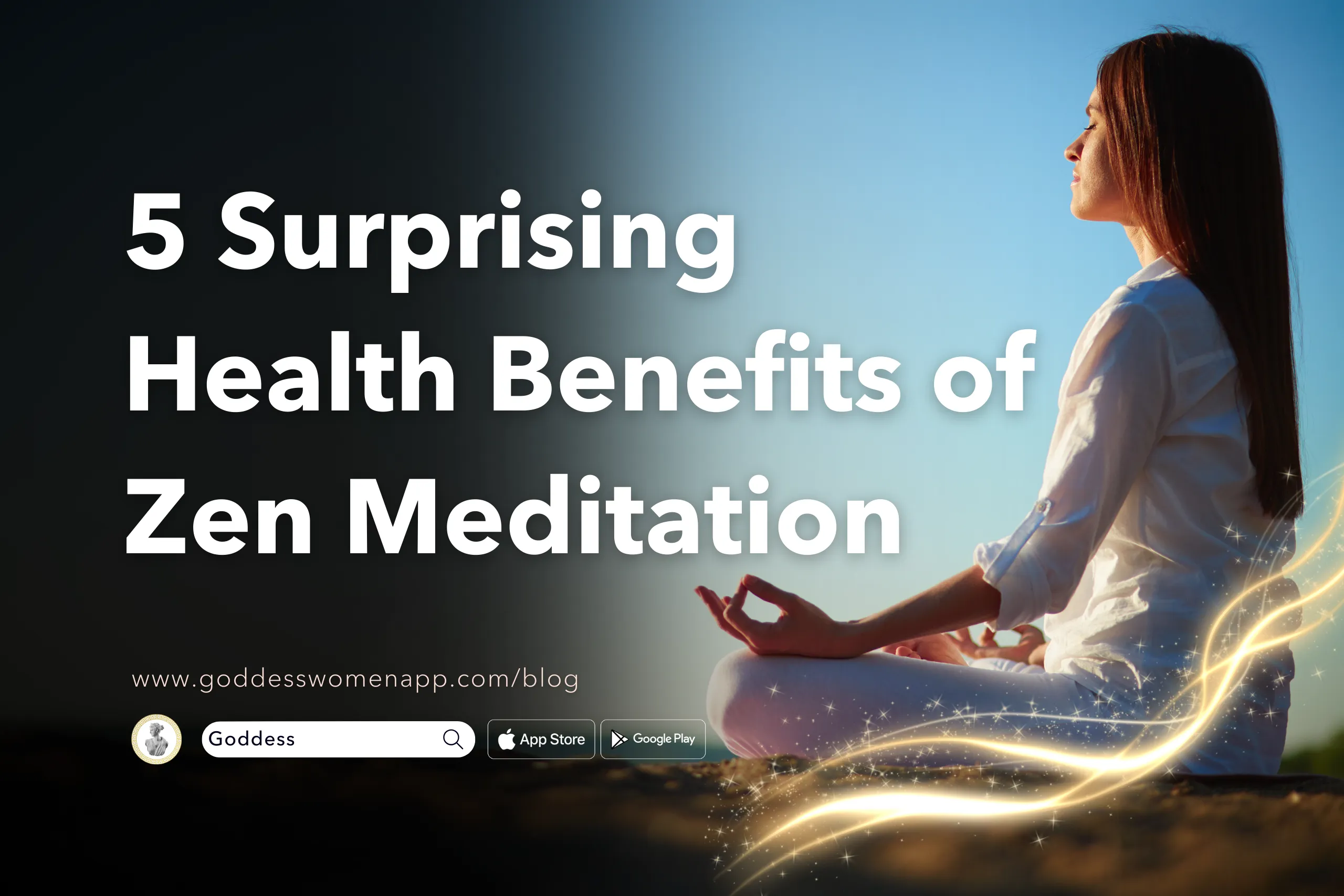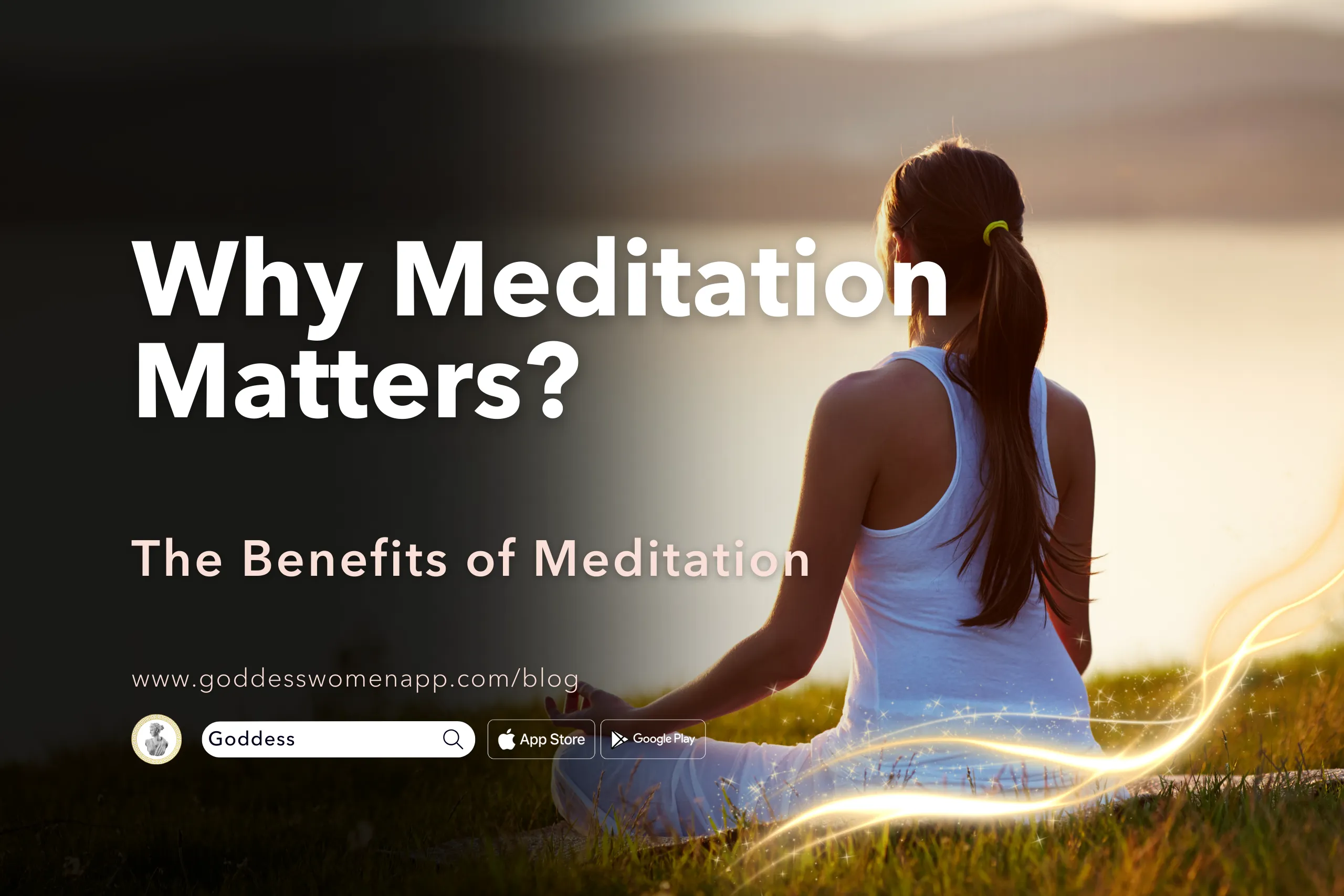Table of Contents
Introduction: The Magic of Sleep Meditation
Ever wondered why, no matter how exhausted you feel, the second your head hits the pillow, your brain decides it’s time to solve every problem you’ve ever had? Welcome to the club of night-time overthinkers. But what if I told you there’s a magic key to not just sleeping, but actually resting? Enter: sleep meditation.
Sleep meditation isn’t just a buzzword; it’s a lifeline for anyone who’s ever found themselves staring at the ceiling at 3 a.m. It’s about turning off your brain’s chatter and tuning into a rest so deep, you’ll wake up feeling like a new person. And the best part? It’s not magic, but science. By guiding your mind and body into a state of relaxation, sleep meditation can improve your sleep quality, mood, and even your health. Ready to transform your nights? Let’s explore the path to dreamland.

The Techniques: Your Path to Dreamland
Breath Focus Technique – How to Use Your Breath to Lull You into a Deep Sleep
Getting Started: Simple Steps to Begin
Find Your Comfort Zone: Lie down in a comfortable position, ensuring your environment is calm and conducive to sleep.
Breathe Deeply: Close your eyes and take a deep, slow breath through your nose, filling your lungs completely.
Exhale Slowly: Gently exhale through your mouth, focusing on the sensation of the air passing out of your lungs.
Repeat: Continue this deep breathing pattern, letting each breath draw you deeper into relaxation.
Advanced Tips: Making the Most Out of Every Breath
Count Your Breaths: To keep your mind focused, try counting your breaths. Inhale on 1, exhale on 2, and so on, up to 10. Then start back at 1.
Incorporate Visualization: Imagine each breath as a wave that washes over you, bringing calm and taking away tension as it recedes.
Body Scan Meditation – Relax Every Part of Your Body and Mind
Step-by-Step Guide: From Head to Toe Relaxation
Start at the Top: With your eyes closed, focus your attention on the top of your head. Notice any sensations you feel.
Move Downward: Gradually move your focus down your body, from your forehead to your toes. Spend a few moments on each part of your body, consciously relaxing and releasing any tension.
Breathe Into Each Part: As you focus on each body part, imagine breathing in relaxation and exhaling stress and tension.
Pro Tips: Enhancing Your Body Scan Experience
Use Guided Audio: If you find your mind wandering, consider using a guided body scan meditation to help keep you on track.
Don’t Rush: Take your time with each body part, allowing yourself to fully relax before moving on.
Visual Imagery – Visualize Your Way to Sleep
Creating Your Sleep Sanctuary: Crafting the Perfect Mental Getaway
Pick Your Paradise: Imagine a place where you feel completely at peace. This could be a beach, a mountain cabin, or even a cozy room.
Engage Your Senses: Try to imagine not just how your sanctuary looks, but also how it sounds, smells, and feels. The more vivid your imagery, the more relaxing it will be.
Visualization Variations: Keeping Your Imagery Fresh
Change Your Scenery: Every few nights, alter some details of your sanctuary to keep the imagery interesting and engaging.
Add Elements: Introduce new elements like a comforting presence or a soothing activity within your sanctuary for added relaxation.
Mindful Awareness Practices – Stay Present and Drift Off
Mindfulness Basics: The Core Principles
Mindfulness is all about living in the moment and acknowledging your thoughts and feelings without judgment. At night, this practice can help calm a busy mind, making it easier to fall asleep.
Focus on the Now: Concentrate on your current sensations, the softness of your bed, the rhythm of your breath, and the quiet of the night.
Acknowledge Thoughts: Recognize your thoughts as they come, but let them pass like clouds in the sky, without getting caught up in them.
Applying Mindfulness: Techniques Before Bed
Mindful Breathing: Spend a few minutes focusing solely on your breath, noticing the rise and fall of your chest.
Body Sensation Awareness: Pay attention to any physical sensations in your body, observing without trying to change anything.

Guided Sleep Meditation – Let Someone Else’s Voice Guide You to Sleep
Finding the Right Guide: What to Look for in Guided Meditations
Choosing a guided meditation for sleep involves finding a voice and style that relaxes you. Consider the following:
Voice and Tone: Look for a soothing, gentle voice that you find calming.
Background Sounds: Decide if you prefer just a voice or if gentle background music or nature sounds help you relax more.
Duration: Consider how long you want your guided meditation to be. Some prefer a quick 10-minute relaxation, while others may enjoy longer sessions.
Top Picks: Recommended Sleep Meditation Tracks
“Deep Sleep Whisper”: A soft-spoken guide into deep sleep with ocean wave sounds in the background.
“Mindful Dreams”: A gentle, guiding voice leads you through a mindfulness exercise designed to ease you into sleep.
“Starry Night Sleep”: A guided visualization that transports you to a serene starlit night, helping you drift off.

Mantra Meditation – Use Calming Mantras to Soothe You to Sleep
Choosing Your Mantra: How to Pick a Soothing Phrase
A mantra is a word, phrase, or sound repeated to aid concentration in meditation. For sleep, choose a mantra that is soothing and has personal significance.
Simplicity: Pick a simple, easy-to-remember phrase.
Positivity: Choose a mantra that brings a sense of peace and contentment.
Mantra Meditation Method: Incorporating Mantras into Your Routine
Repetition: Silently repeat your chosen mantra in your mind, focusing solely on the words and their rhythm.
Combine with Breath: Sync your mantra with your breath, repeating it with each inhale and exhale, to deepen the relaxation.
Progressive Muscle Relaxation (PMR) – Release Tension for Better Rest
The PMR Process: Detailed Walkthrough
Progressive Muscle Relaxation (PMR) is a technique that involves tensing and then relaxing each muscle group in the body to release tension and promote relaxation.
Find a Comfortable Position: Lie down or sit in a comfortable chair, ensuring you’re in a place where you can relax fully.
Start with Your Feet: Tense the muscles in your feet as much as you can for about 5 seconds, then release and notice the sensation of relaxation.
Work Your Way Up: Move through each muscle group in your body — from your feet to your calves, thighs, abdomen, hands, arms, shoulders, neck, and face — tensing and relaxing each one in turn.
Breathe: Combine deep, slow breaths with each muscle relaxation for an enhanced calming effect.
PMR Tips for Success: Maximizing Relaxation
Consistency is Key: Practice PMR regularly, ideally as part of your bedtime routine, to help your body learn the signals for sleep.
Focus on the Feeling: Pay close attention to the contrast between tension and relaxation; this awareness can deepen the relaxation experience.

Binaural Beats for Sleep – How Sound Waves Can Enhance Your Sleep
Understanding Binaural Beats: The Science Behind the Sounds
Binaural beats are a form of soundwave therapy. By playing two slightly different tones in each ear, they create a perceived third tone that encourages the brain to sync up to a specific frequency, promoting relaxation, meditation, or even sleep.
Frequency Matters: Different frequencies of binaural beats influence the brain in various ways. For sleep, the delta frequency range (1-4 Hz) is most effective.
Headphones Required: For the most effective experience, use headphones to ensure each ear receives the intended tone.
How to Use Them: Tips for Incorporating Binaural Beats into Your Sleep Meditation
Timing: Start listening to binaural beats 30 minutes before you plan to sleep.
Volume: Keep the volume at a comfortable level; it should be soothing, not overwhelming.
Experiment: Try different tracks to find the one that works best for you.
Yoga Nidra for Sleep – A Yogic Sleep That Revitalizes
Yoga Nidra Basics: What It Is and How It Helps
Yoga Nidra, or “yogic sleep,” is a state of consciousness between waking and sleeping, induced by a guided meditation that deeply relaxes the body and mind.
Deep Relaxation: Unlike traditional sleep, Yoga Nidra allows you to remain conscious, fostering deep levels of physical and mental relaxation.
Stress Relief: Regular practice can significantly reduce stress and improve sleep quality.
Getting Started with Yoga Nidra: Preparing for Your Practice
Find a Guided Session: Choose a Yoga Nidra guided meditation that resonates with you. There are many free and paid options available online.
Create a Restful Environment: Ensure your practice space is comfortable and free from distractions. Use a mat, blanket, or even your bed.

Sleep-Friendly Mindset – Cultivate Thoughts That Promote Sleep
Mindset Shifts for Better Sleep: Changing How You Think About Sleep
Embrace a Positive Sleep Attitude: Remind yourself that sleep is a natural, essential part of life, not something to battle with.
Let Go of Sleep Anxiety: Worrying about sleep only makes it more elusive. Accept that some nights are better than others and focus on relaxation, not sleep.
Nightly Reflections: Practices to Encourage Positive Sleep Thoughts
Gratitude Journaling: Before bed, write down three things you’re grateful for. This practice can shift your mindset to a more positive space, conducive to restful sleep.
Mindful Reflection: Spend a few minutes reflecting on the day with a gentle, non-judgmental attitude. Acknowledge the day’s events, then let them go, preparing your mind for rest.
Making Sleep Meditation a Habit
Creating Your Sleep Meditation Routine – Tips for Incorporating These Techniques into Your Nightly Ritual
Set a Consistent Bedtime: Your body thrives on routine. Try to go to bed and wake up at the same time every day to regulate your body’s internal clock.
Create a Pre-Sleep Ritual: Dedicate 30 minutes before bed to wind down. Include sleep meditation as part of this ritual, whether it’s practicing mindfulness, listening to a guided meditation, or doing a body scan.
Limit Screen Time: Turn off electronic devices at least an hour before bedtime to reduce blue light exposure, which can disrupt sleep patterns.
Comfort is Key: Ensure your sleeping environment is conducive to rest. This means a comfortable mattress, minimal noise, and a cool, dark room.
Start Small: If meditation is new to you, begin with short, 5-minute sessions and gradually increase the duration as you become more comfortable with the practice.
Troubleshooting Common Issues – Overcoming Obstacles in Your Sleep Meditation Practice
Difficulty Concentrating: It’s normal for your mind to wander during meditation. Gently acknowledge wandering thoughts and bring your focus back to your meditation technique.
Not Feeling Immediate Effects: Like any skill, meditation takes time to master. Be patient and consistent with your practice.
Falling Asleep During Meditation: If you find yourself falling asleep during meditation, consider sitting up rather than lying down, or practice at a slightly earlier time.

Resources to Dive Deeper
Books
“The Sleep Solution” by W. Chris Winter, M.D.: Offers insights into various sleep issues and practical solutions, including meditation.
“Wherever You Go, There You Are” by Jon Kabat-Zinn: A guide to mindfulness meditation and its applications for a better life, including improved sleep.
Apps
Goddess App Sleep Meditations: Features a variety of sleep meditations designed to help you relax and drift off into a deep sleep.
Websites
Sleep Foundation: Offers research-based advice on sleep health, including the benefits of meditation for sleep.
As we conclude our exploration of “10 Mind-Blowing Sleep Meditation Techniques for the Best Zzz’s of Your Life,” let’s reflect on the transformative journey we’ve embarked upon. We’ve delved into a variety of techniques designed to enhance your nightly rest, from the breath focus and body scan meditations that ground and relax you, to the imaginative realms of visual imagery and the profound relaxation offered by Yoga Nidra.
We’ve discovered how binaural beats can tune your brain into a state of deep rest and how mantra meditation can center and calm your spirit. Progressive Muscle Relaxation (PMR) has shown us a methodical approach to easing bodily tension, while mindful awareness practices help us stay present, gently escorting us into the arms of Morpheus.
These techniques offer a palette of options for you to experiment with and integrate into your nightly routine. The journey to finding what works best for you is personal and unique. Some may find solace in the rhythmic repetition of mantras, while others may prefer the guided narratives that lead them through relaxing landscapes. The key is to remain open and curious, allowing yourself the flexibility to explore and adapt your practice as you discover what most effectively ushers you into a state of restful sleep.
As you continue to refine your sleep meditation practice, I encourage you to explore and utilize the resources available to you, including books, apps, and websites dedicated to enhancing sleep through meditation. In particular, the Goddess app offers a dedicated sleep category filled with guided meditations specifically designed to help you relax and drift off into a deep, restorative sleep. Whether you’re a seasoned meditator or just beginning your journey, the Goddess app provides a rich library of content to support and enhance your sleep meditation practice.
In closing, embrace the night and all its potential for rest, renewal, and transformation. Let sleep meditation be your guide to a more restful, peaceful, and energized life. And as you continue on this journey, consider the Goddess app as a companion to explore the vast and calming world of sleep meditation. Give the sleep category a try tonight, and discover the difference it can make in your quest for the best Zzz’s of your life.
Sweet dreams and happy meditating!
